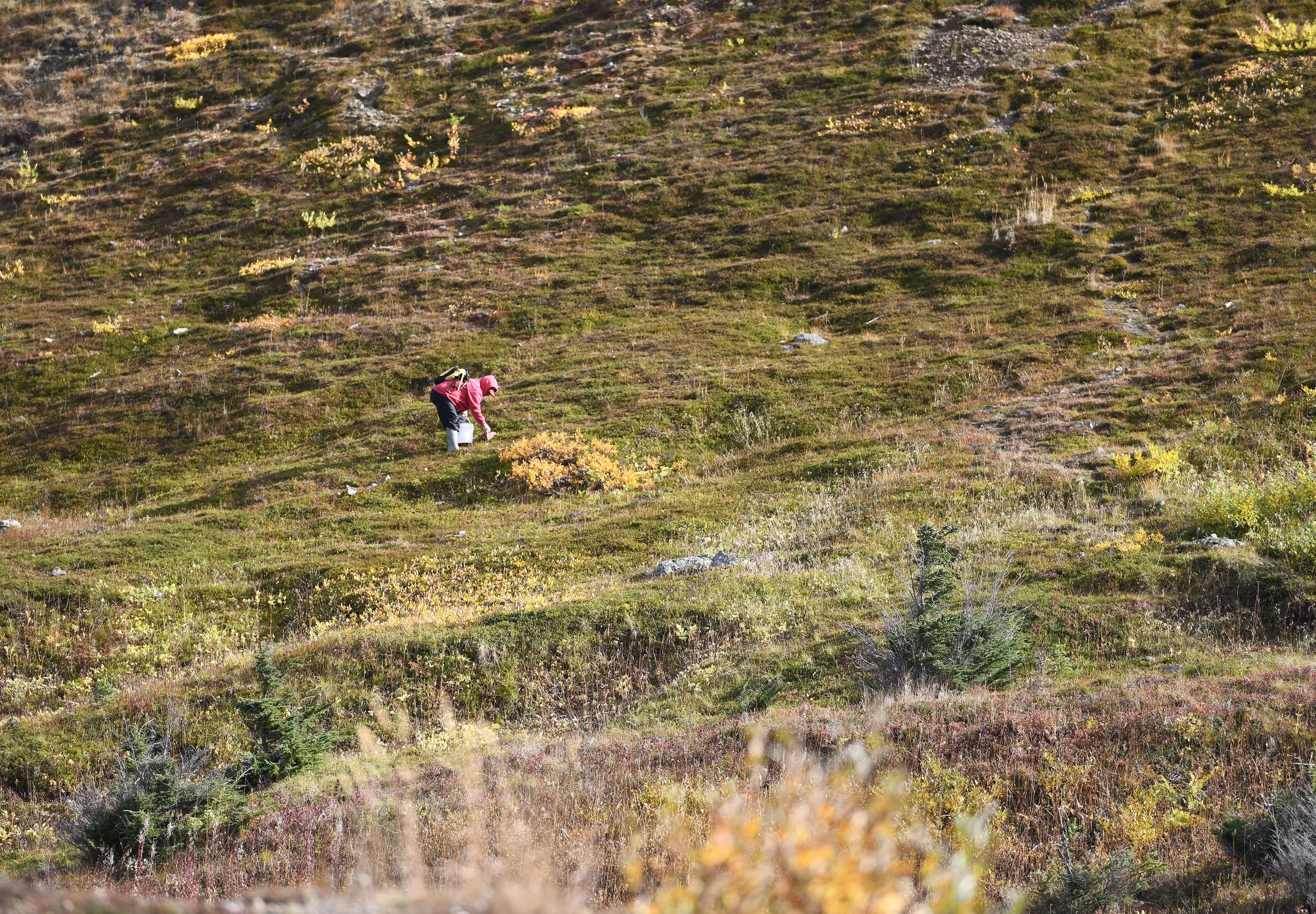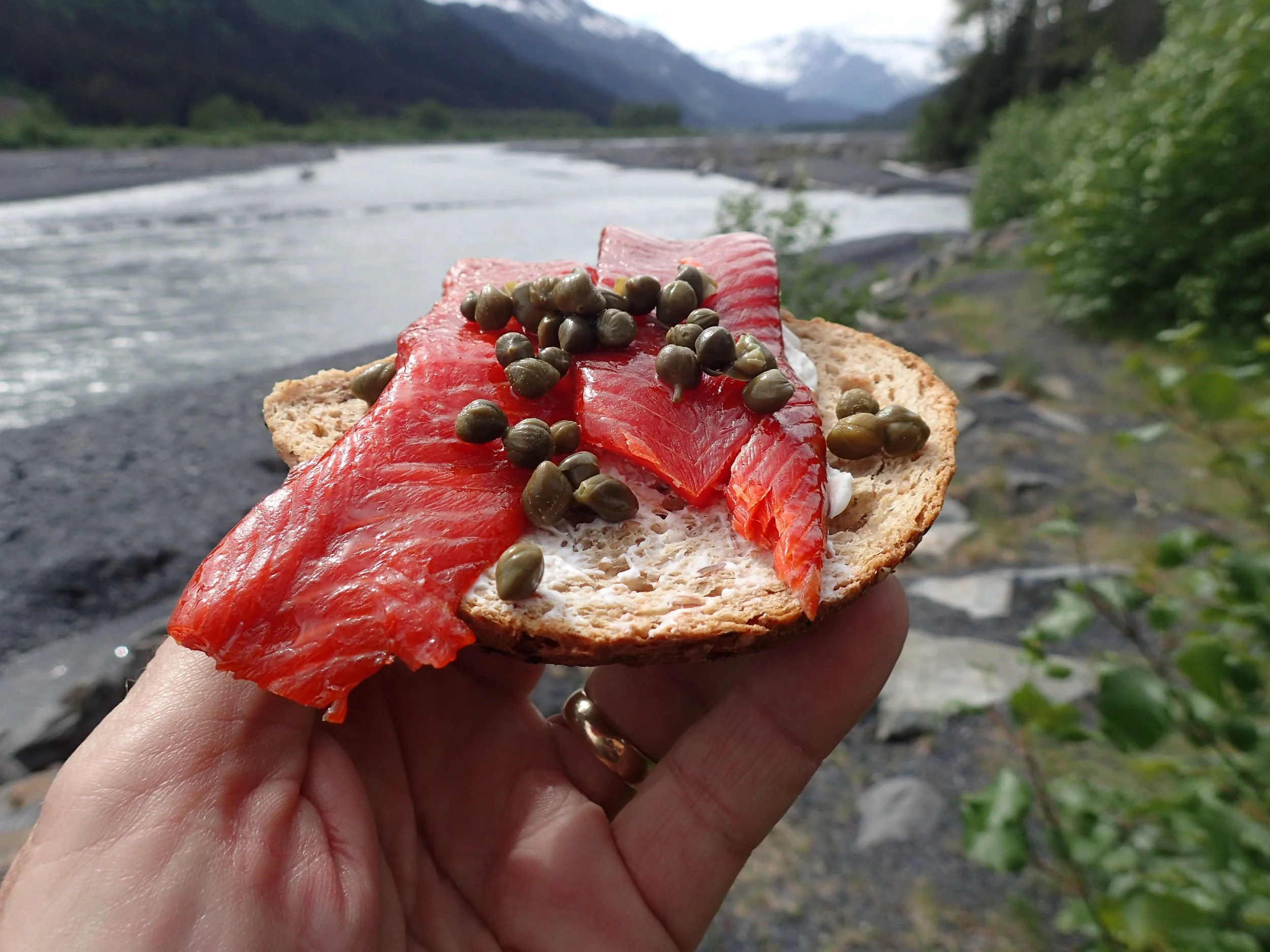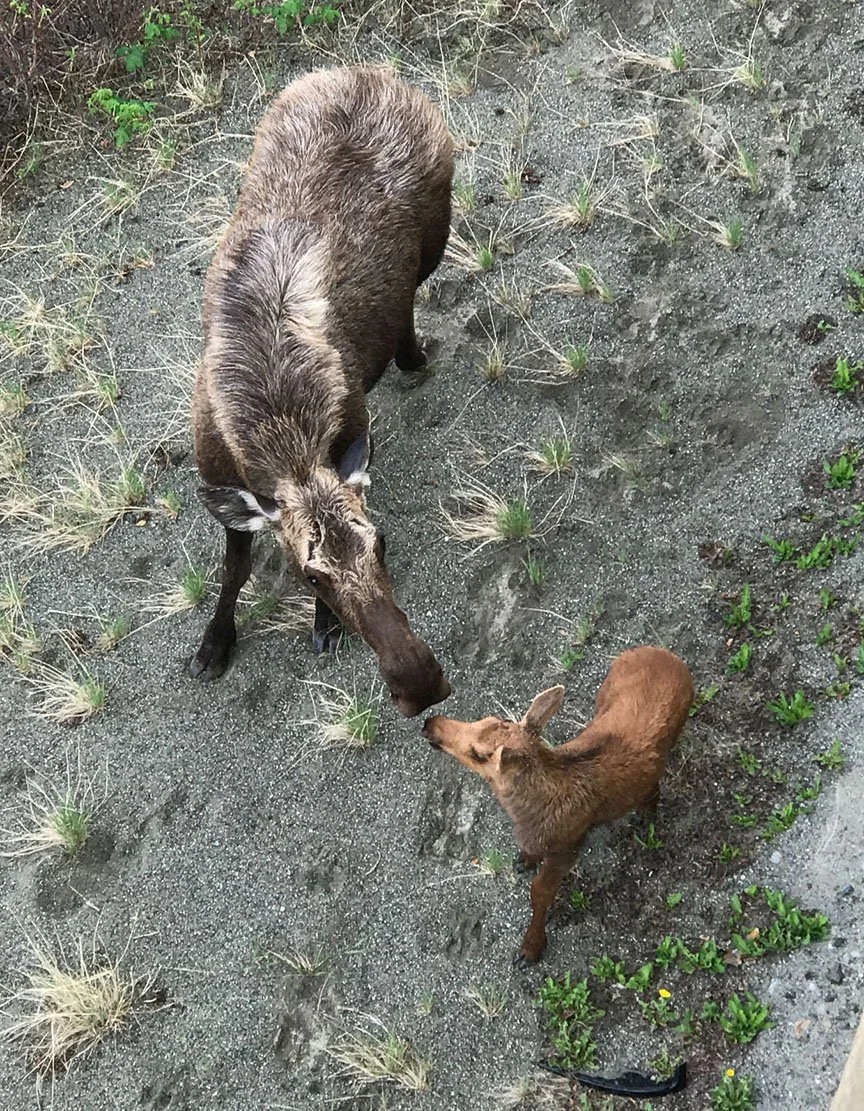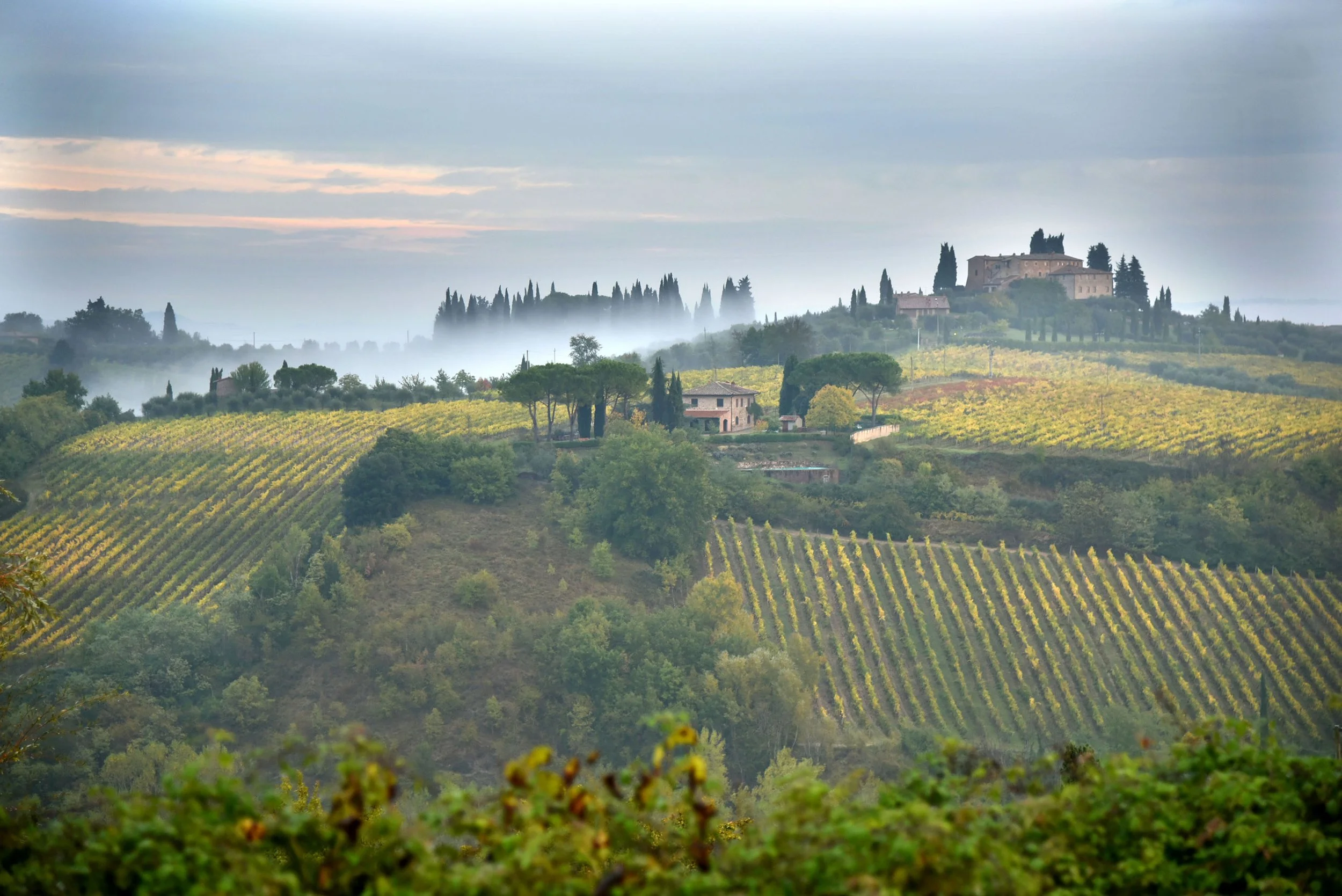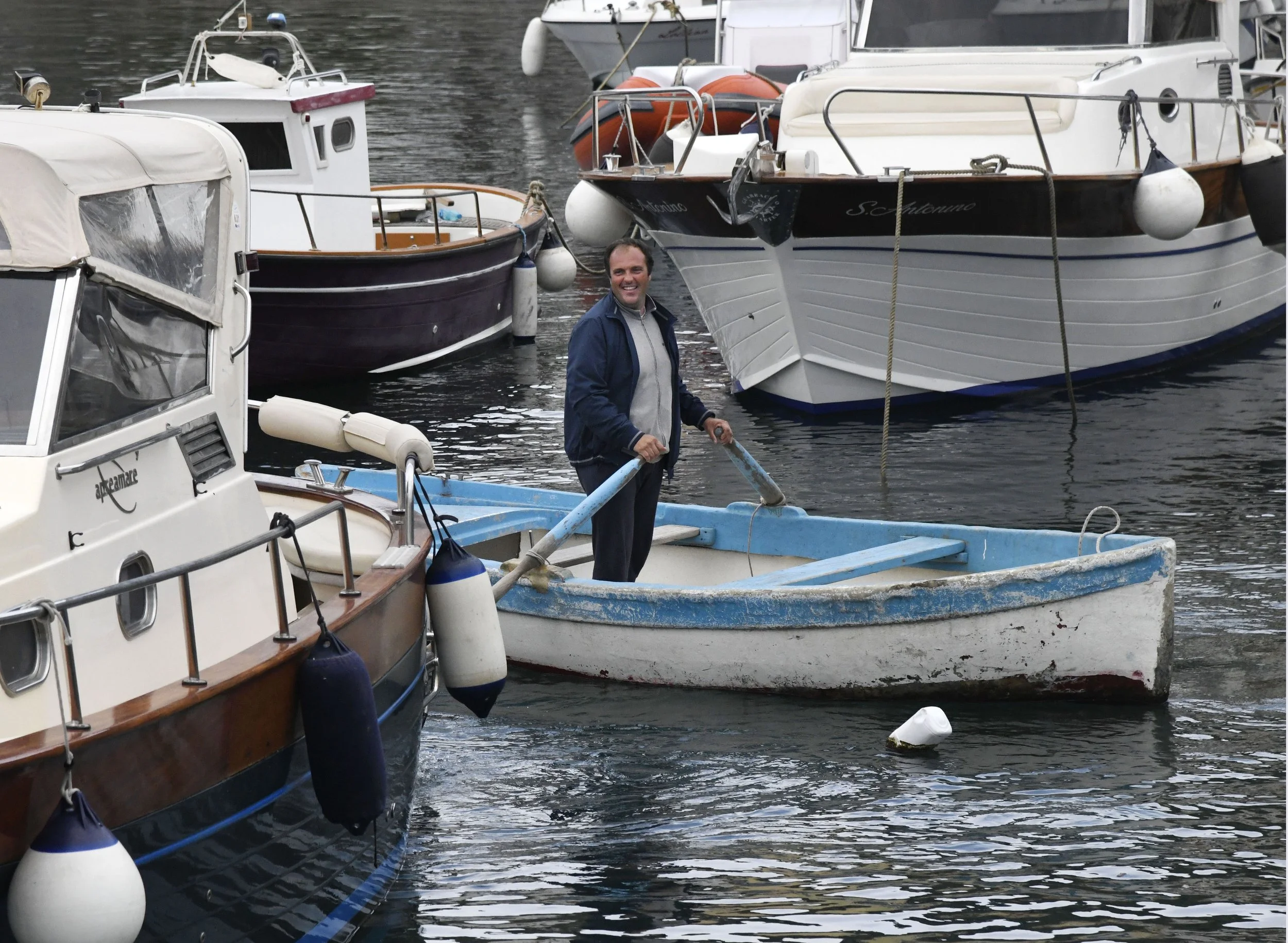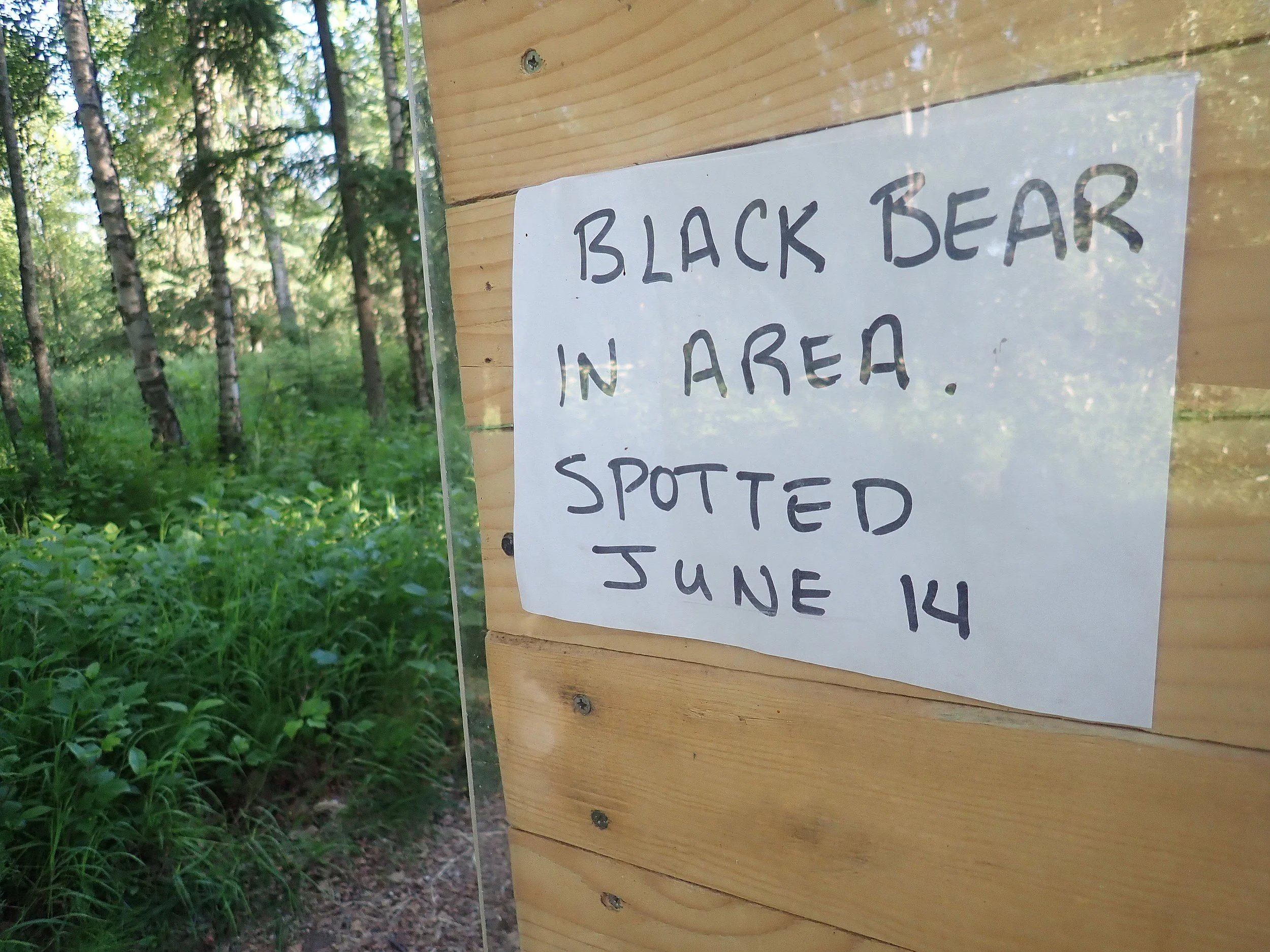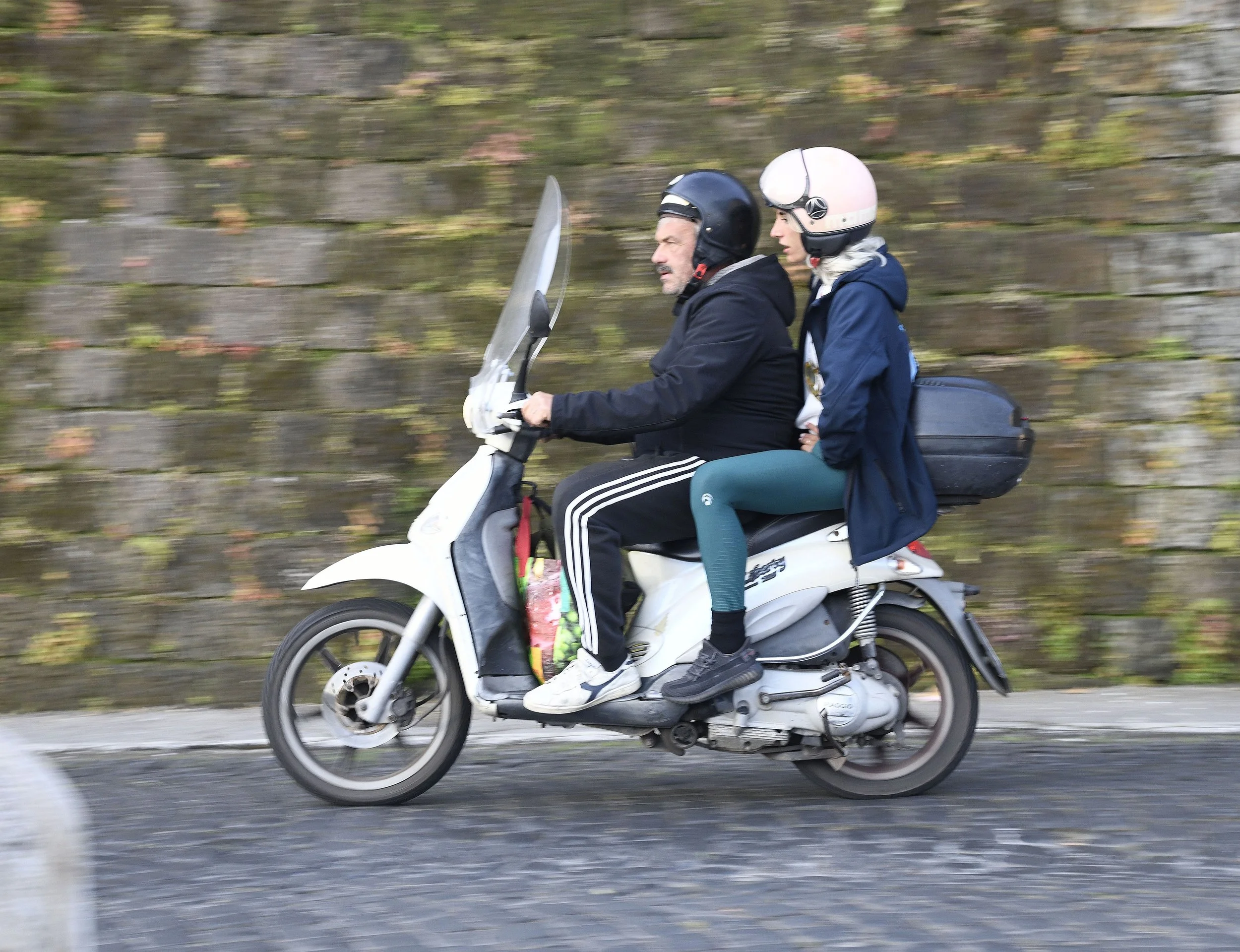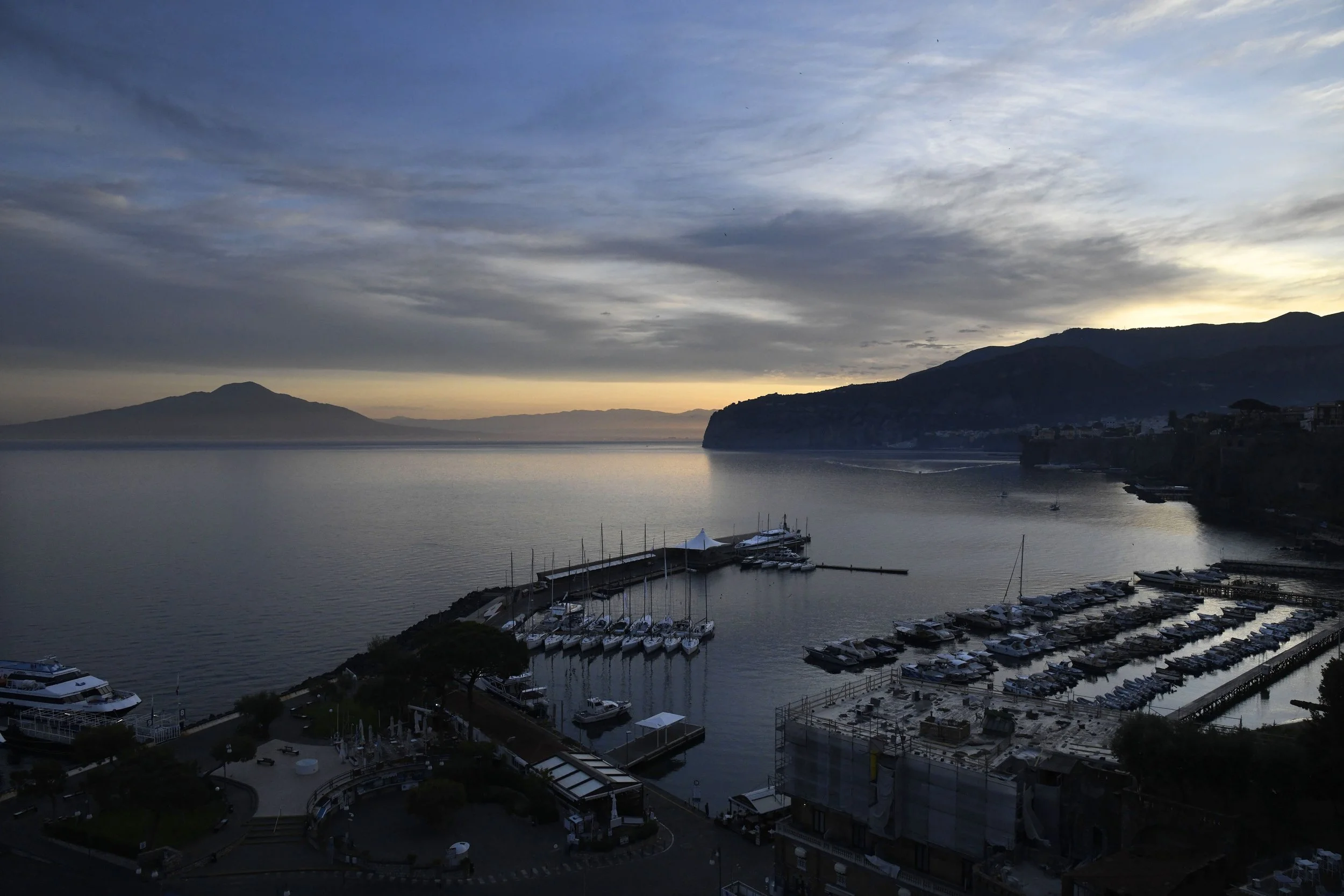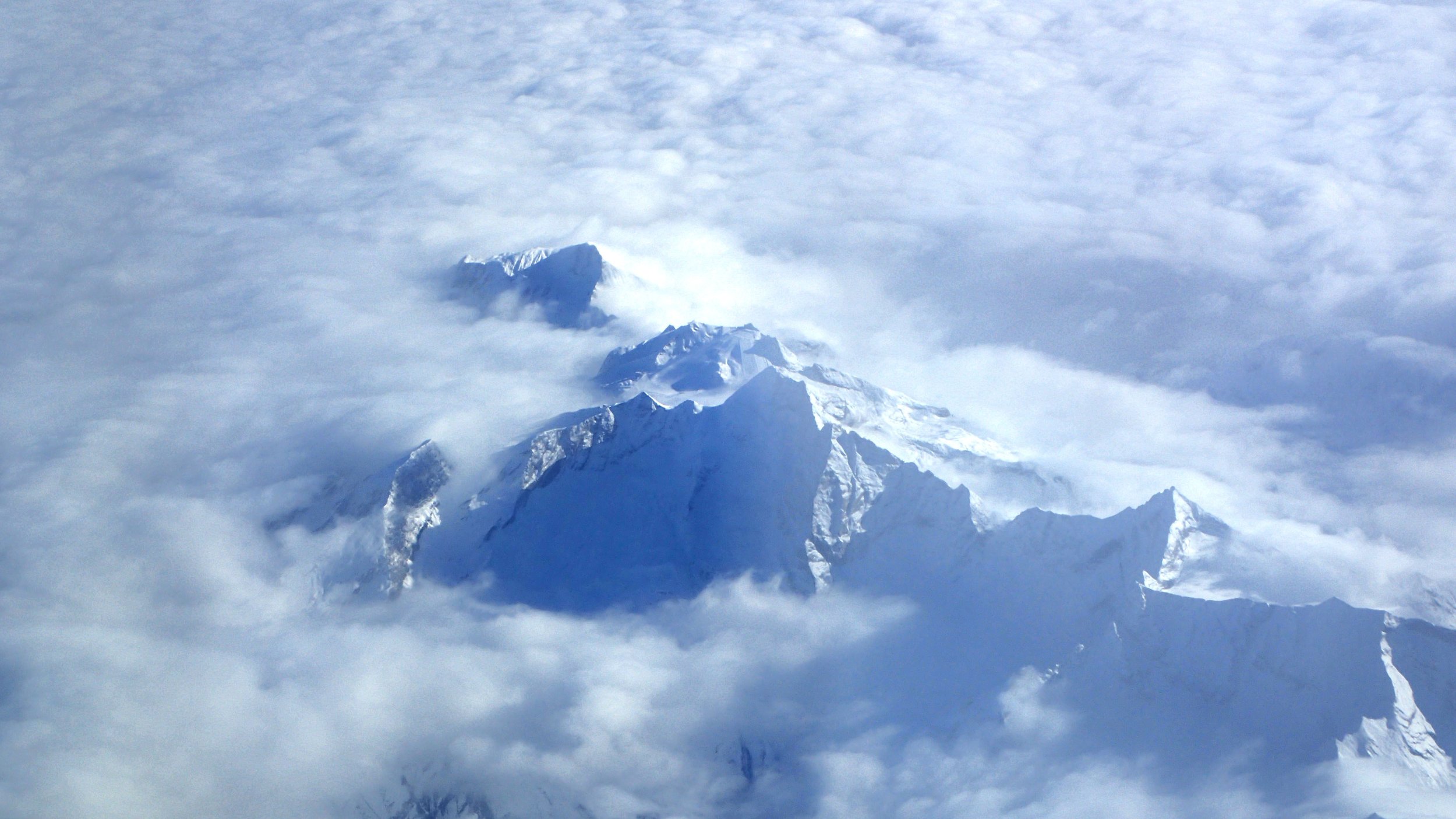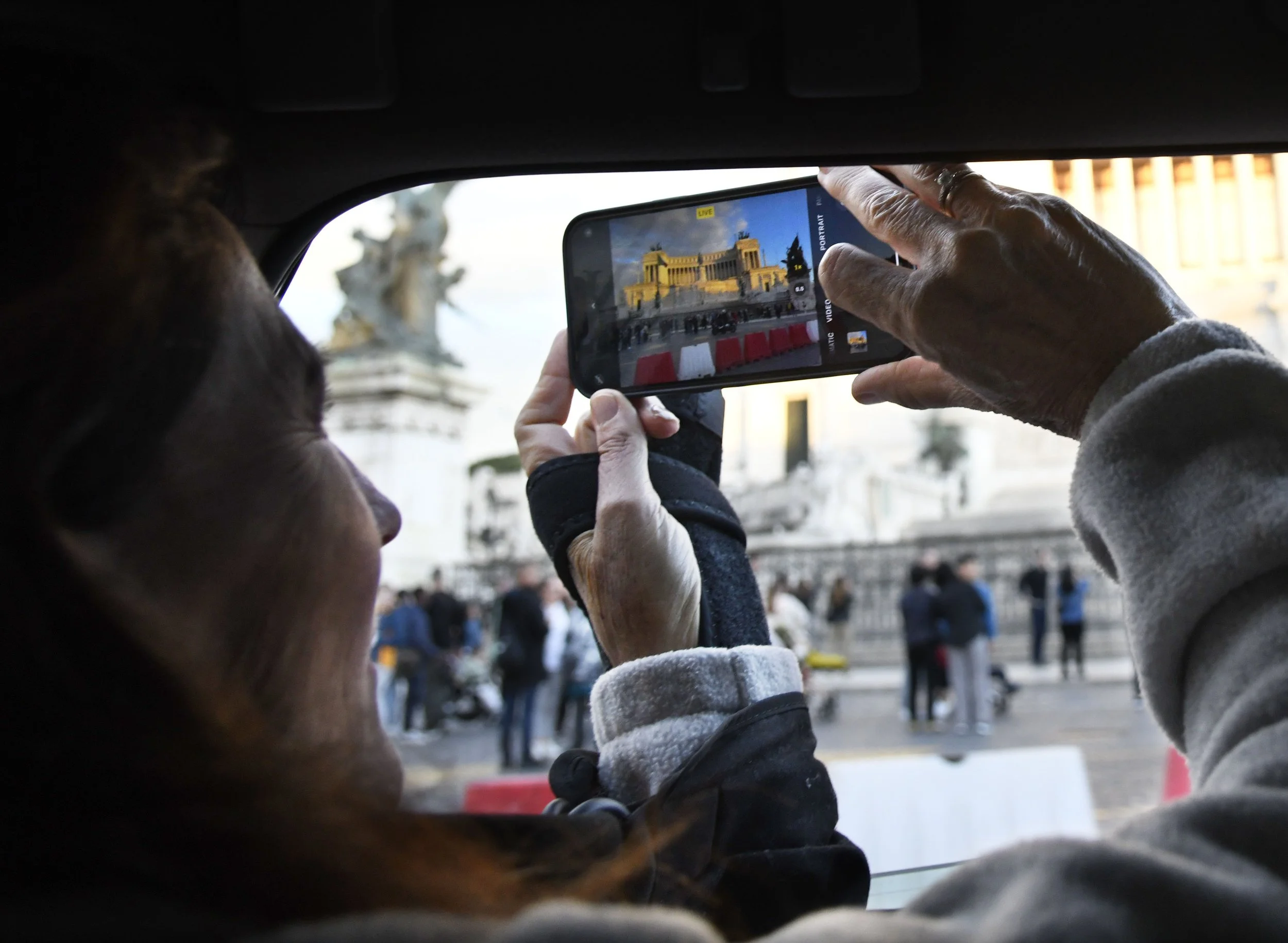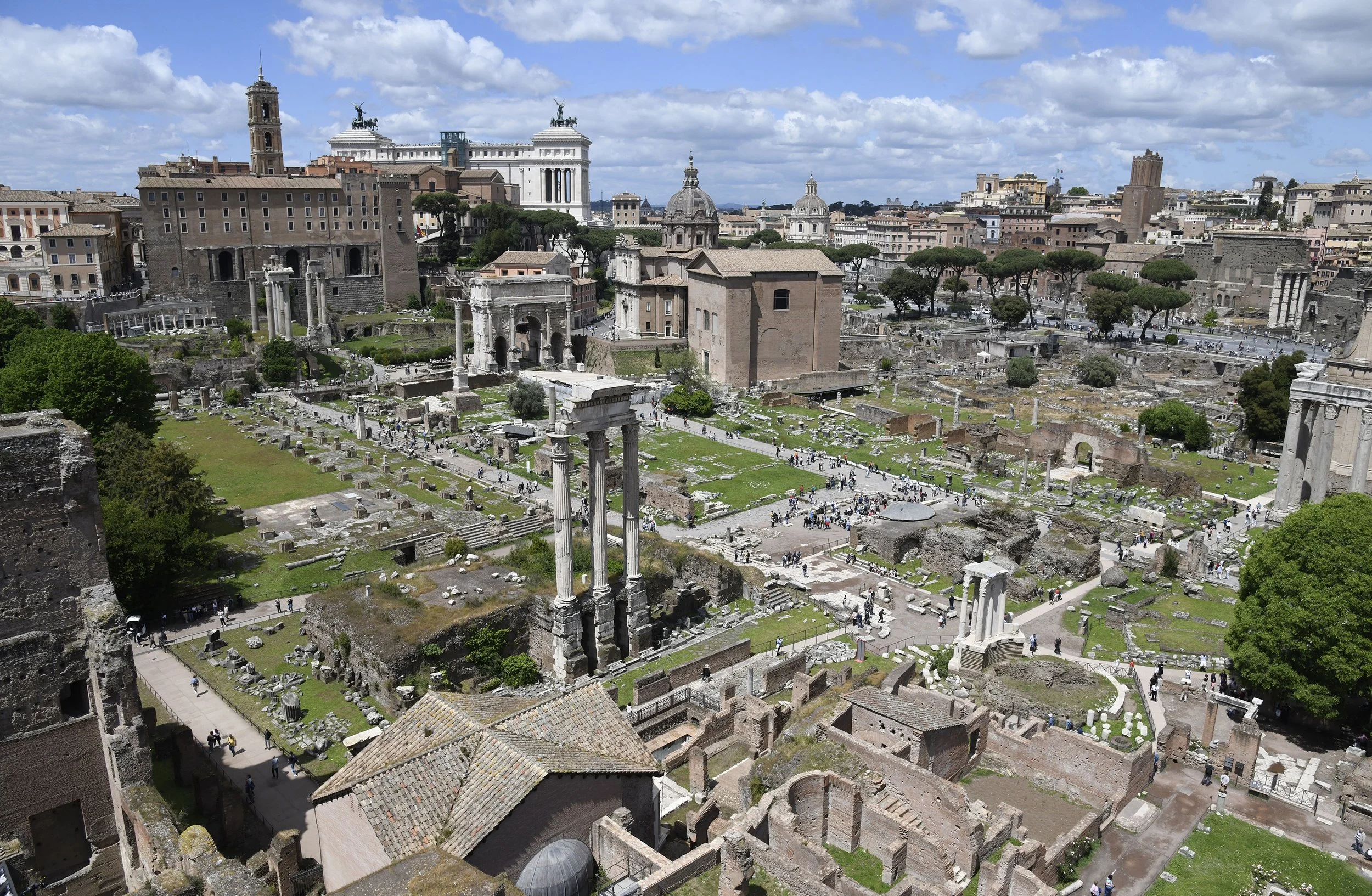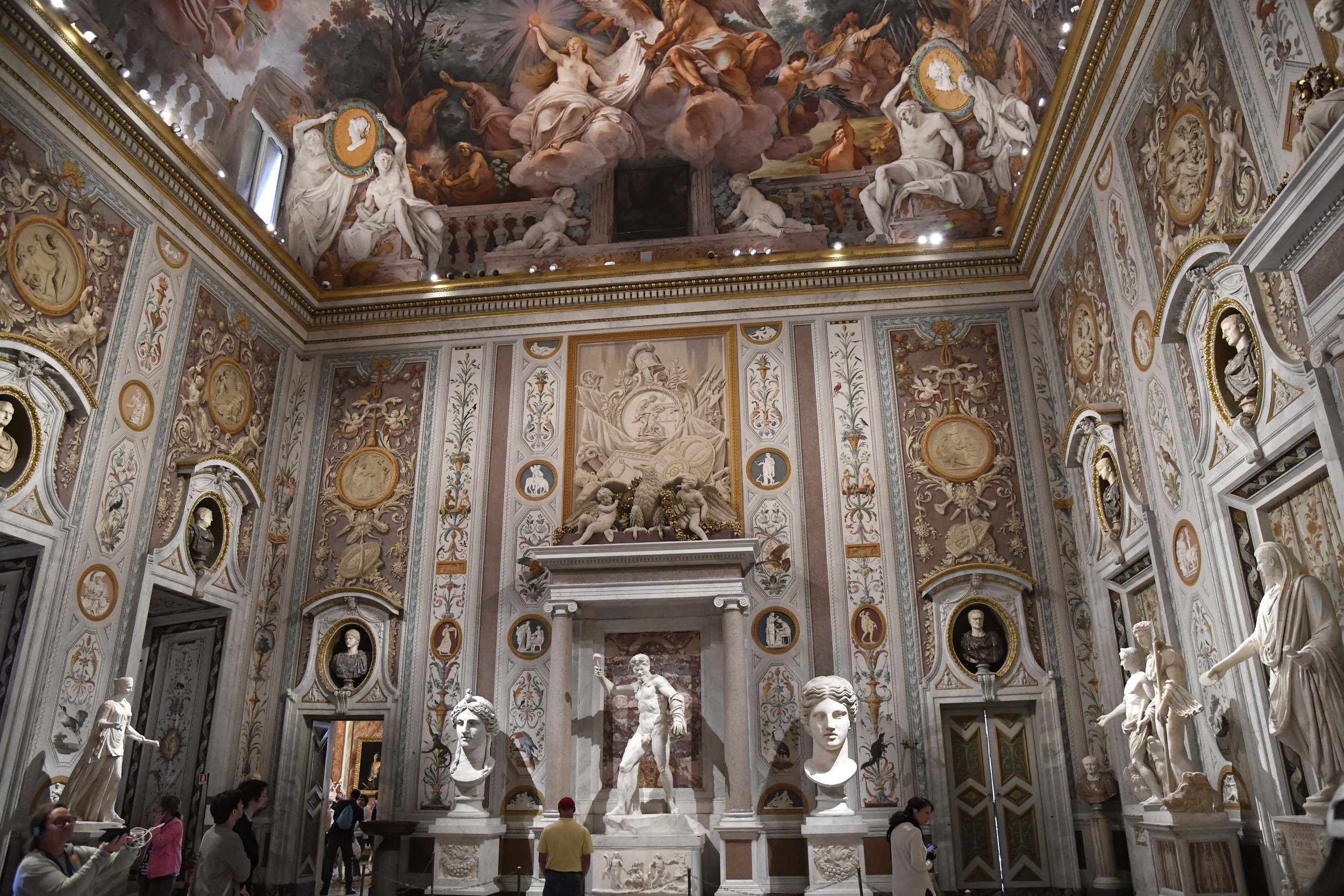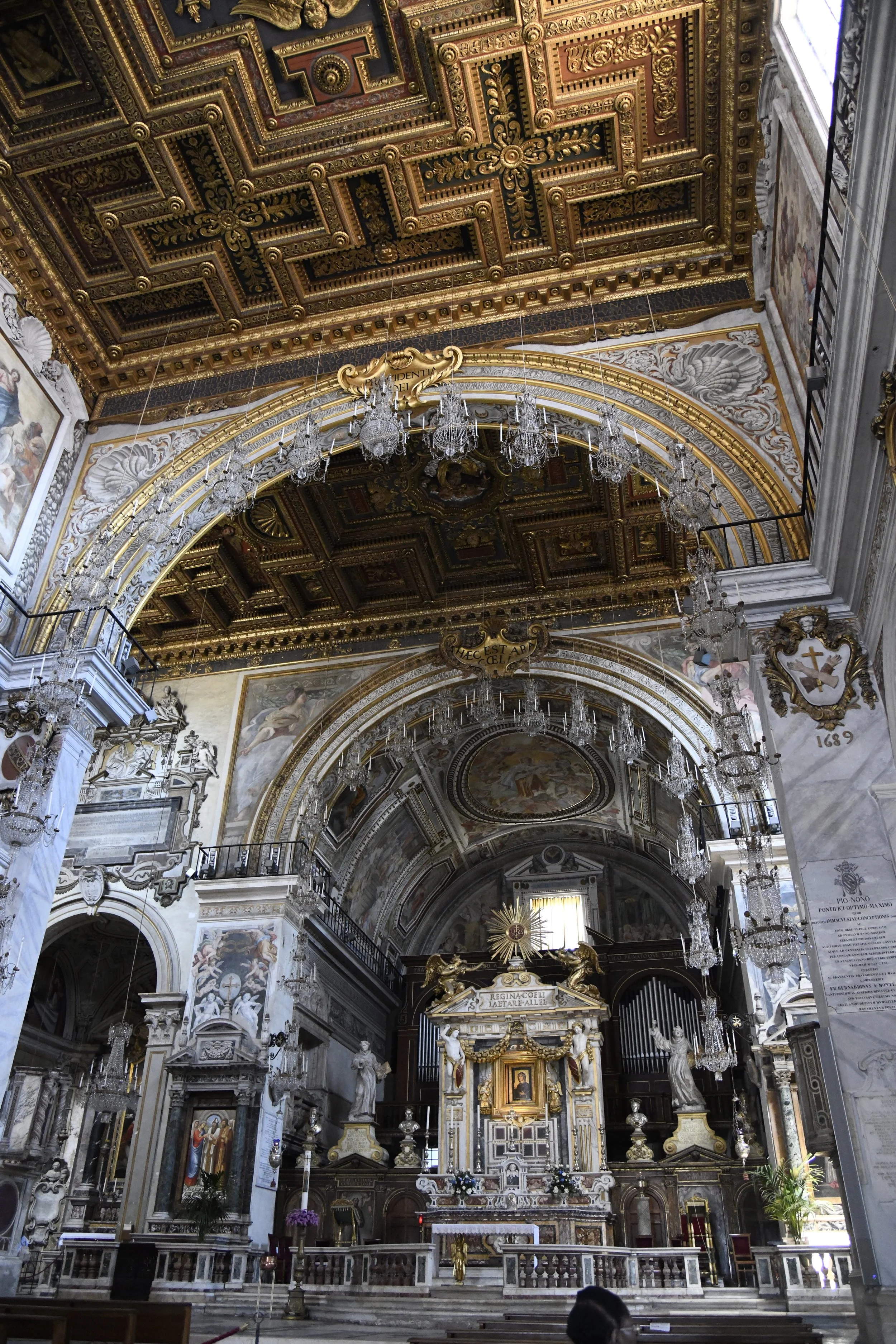Five days in Fairbanks: Finding the aurora and more
Kihei's Kelly Thayer stands atop a mound of Fairbanks snow as the aurora borealis spirals behind her. She said it was a lifelong dream to see the lights.
By MATTHEW THAYER
Five days in frosty Fairbanks seemed like an adequate window to catch the Northern Lights.
As things turned out, we could have spent five hours in the sleepy Alaska town and flown home happy. Giddy even. And that would have been our loss, for Fairbanks turned out to be a fun and interesting place. With its friendly locals, icy roads and invigorating climate, America's northernmost city served up a slice of arctic life far removed from our Maui home.
Blayne "Buddy" Streeper of Fort Nelson, BC Canada, and his dog team head for the finish line on the second day of the 2025 Lotto Alaska Open North American Championship last weekend in Fairbanks. Covering 68.3 miles in three sprint events held over three days, Streeper and his dogs won with a combined time of three hours, 34 minutes and 54.1 seconds. Streeper averaged roughly 19.5 mph while setting a three-day total track record in the 79th running of the annual event that predates the Iditarod. Frenchman Remy Coste, competing out of Sweden, took second less than two minutes back.
The call north started last fall when my wife Kelly read that the aurora borealis was predicted to be exceptionally active in 2025, perhaps the most in a decade. Seeing the lights has long been on her bucket list. A report from NASA said the sun was at a "solar maximum" and generating an intense solar wind. This was the year to go.
My experience with past major celestial events has taught me to keep a firm grip on hopes and expectations. Maui's rain-soaked total solar eclipse of July 11, 1991, still hurts. From Halley's Comet to Hale-Bopp, even when you do luck out and catch astral phenomena, they rarely live up to their billing. "See that blur next to the star?" "Which star?" Several years back, our family booked rooms at Chena Hot Springs near Fairbanks to view the lights, but we were rained out. Even if the sky had been clear, a low ebb in solar activity meant seeing the aurora borealis was a long shot anyway.
To maximize this spring's opportunity, we elected to hold off booking flights, a car and lodging until the aurora app on Kelly's phone predicted a good show. The 10-day weather forecast was also part of the equation, but we pulled the trigger a few days early when a bar graph glowed red for March 12-16. According to the Kp index, which rates aurora strength from a nothing zero to a knocking-satellites-offline nine, Fairbanks was predicted to have three nights of outstanding fives, followed by a pair of shimmering fours.
We booked the trip and crossed our fingers for clear skies. As the weather forecast unfolded, we were thrilled to see it was as rosy as the aurora's. Unfortunately, both predictors shifted downward as our vacation neared. Clouds were now expected, but we still might have one or two clear nights. Kp index fives became threes, then twos. Nightly temperatures were predicted to be below zero Fahrenheit. A full moon might make viewing more difficult.
Undaunted, we packed all the warm gear we owned or could borrow (mostly borrow) and set off on the morning of March 11. Arriving at Fairbanks International Airport around 9:30 p.m. the same day, we dug our thermal jackets out of our bags and headed to the rental car desk.
Any pressure I felt about driving on icy roads was amplified a bit when the agent handed over the keys to an all-wheel-drive SUV with a little more than 500 miles on the odometer. I guess if we were going to plow into a snowbank, they figured we should do it in style.
Once our suitcases were stowed, the car's heater was running and we were buckled in tight, I performed several practice stops and turns in the parking lot before heading to the Best Western Pioneer Park Inn. Tucked in a little stand of woods at the edge of the city proper, its lobby smelling of chlorine from the pool we never used, the inn became our home away from home for the next five nights.
The fickle nature of the forecasts became evident even before we unpacked. The night had been predicted to be cloudy, but it was crisp and clear. Though the Kp index called for a three, according to the new apps we were checking, a burst of aurora activity was headed our way.
We paused only long enough to gear up and ask the folks at the front desk for a tip on where to go nearby. They suggested we plug into our GPS a nursery on Farmers Loop Road called "The Plant Kingdom." There were too many streetlights at that closed business, but our search for a view took us to a plowed turnout off a snow-covered road called Echo Acres Drive.
The aurora was visible as a faint band of gray across the sky as we piled out of the car. Were those clouds? Nope. Those were the Northern Lights! The plan worked! As our eyes adjusted to the moonlit night, flares pulsing in the sky began to take on green and red tints. The pictures we were taking were even brighter.
The aurora glows red and green over Fairbanks, Alaska earlier this month. Generated by disturbances in Earth's magnetosphere caused by the solar wind of the sun, the northern lights are charged particles that can be seen as curtains, rays, spirals and dynamic flickers.
Ignoring our fatigue and freezing appendages, we reveled in the celestial display well past midnight. Just when we decided it was time to head back to the inn, the brightest display of the night gushed up out of the horizon to create a glowing green rope that stretched across the starry heavens. It hung for a minute or two, then spun into a coil that collapsed upon itself.
Our faces hurt from smiling so hard.
In retrospect, on such a clear night, we probably should have stayed in the little pullout parking lot until dawn hoping for more, for the clouds did indeed roll in. Two nights later, under partly-to-mostly cloudy skies, we viewed the total lunar eclipse while the obscured aurora glowed through patchy breaks in the cover. Subdued and moody, it was still an amazing sight. If that night was all we saw of the lights, we would have been satisfied. To hear the Fairbanks locals tell it, many unfortunate aurora chasers return home empty-handed.
A composite image made from three photographs shows the total lunar eclipse unfolding over Fairbanks on March 13, 2025.
The northern lights are visible through a bank of clouds during a total lunar eclipse over Fairbanks, Alaska, on March 13.
The rest of our late nights in Fairbanks were deemed too murky to bundle up, drive and endure sub-zero temperatures. This shift in focus turned out to be positive. We had a town to explore and new people to meet.
At 64 degrees north latitude and with a population of 31,500 souls, Fairbanks is a distant second to Anchorage in size. The pair remind me of, say, comparing Honolulu to Hilo. One is a major metropolitan area on the rise, and the other a functioning relic contentedly stuck in a slower, bygone time.
Built in a series of grids over flatlands and framed by wooded hills to the east, Fairbanks is graced by Art Deco buildings and a road infrastructure more than adequate for the population. It is a place where U-turns are legal and young people walk around in shorts, slippers and short sleeves when temperatures climb toward the high 20s.
A statue titled "Unknown First Family" by Malcolm Alexander stands in Fairbanks’ Golden Heart Plaza on clear sunny day with single-digit temperatures.
"I love Fairbanks," said Amber Vaska, town resident and chair for the World Eskimo-Indian Olympics. "It's small enough that you know everyone. It is small enough that you can easily get out of town and into nature. Anchorage is a little too city-like for us."
Vaska was part of a contingent playing traditional games at the Morris Thompson Cultural & Visitors Center in downtown Fairbanks when we stopped in. The Dena Games she helps organize provide a chance for athletes to practice for July's big World Eskimo Indian Olympics and to participate in traditional competitions that can't be held in the summer, like dog mushing and snowshoe racing.
Dena Games athletes and elders participate in a competition of "Hand Games" at the Morris Thompson Cultural & Visitor Center earlier this month.
Vaska said it was her organization's mission to "continue to celebrate our cultures and preserve them for future generations."
"We have dancing, we have regalia, so we really come together statewide, even internationally, with our indigenous cultures in Alaska and the polar north," she said.
Athlete Brittany Woods-Orrison said she splits her time between Fairbanks and remote Rampart on the Yukon River, population 57.
"Fairbanks is a really interesting community because it is called a hub in Alaska, which means a lot of smaller communities and villages surrounding Fairbanks come here frequently," she said. "Fairbanks is where a lot of people come together and where big events happen, so a lot of different cultural groups are represented here. I just love living in Alaska, especially this area, because we get the extremes. From the winter solstice, we're building to the summer solstice. Every day the light changes by seven minutes."
Woods-Orrison said being a native athlete is about celebrating culture, competition and mastering survival skills.
"I started competing in the native games at a young age, so I have a really strong sense of self," she said. "With indigenous people, it's our relationship with the land and knowing that we can live in coexistence. We're stewards of this place and we belong to this place. I grew up respecting the animals we ate and what we harvested and the people I'm around. I'm thankful to the native games because there is no other games or sports like it. We have such a high value to sportsmanship. They all have survival skills tied to them, or a deeper purpose."
Fairbanks resident Jonathan Smith paused after a training walk in the snow to describe why he moved to Fairbanks in 2011 and never left.
"It's a weird mix of blue-collar folks and outdoorsy hunters and free-spirited people who want to commune with nature," Smith said with a smile. "You know, stoners, free spirits, people who just want to make art in their front yard and live in a dry cabin."
Fairbanks resident Jonathan Smith gives a thumbs up after a training session for the Midnight Sun Run scheduled for the summer solstice.
The California transplant said the coldest temperature he has experienced in Fairbanks was 59 below.
"I like the cold and that was the first time that I actually cursed the cold," Smith said. "It takes your breath right out of your lungs. You definitely don't want to go outside with any of your skin exposed."
Little Owl Cafe barista Fiona Secor said the cafe and most other businesses remain closed when temperatures plunge so deep that even cars don't run properly.
Little Owl Cafe Artisans Courtyard barista Fiona Secor offers up a tray of custom cupcakes.
"Last year it got down to the negative 40s for a pretty good stretch," she said. "But it's been pretty mild this winter."
The great-granddaughter of one of Fairbanks' first doctors, Secor said she has fond memories of seeing the Northern Lights while waiting to head off to school on dark winter mornings.
"It's so cool, like every time, to see them up in the sky," she said. "It's always so fun and kind of magical to see them."
Woods-Orrison said the aurora is a way to commune with the past.
"We have really old oral stories about the lights and what they mean," she said. "It reminds me of my ancestors and what has passed. They're a sign of our ties to this place. It helps me to slow down and just, almost meditate in a way because I'm enjoying what is happening. Everyone takes a moment to pause and we all get excited together."
The aurora borealis flares over Fairbanks.
Vaska says there are traditional ways to get the aurora to shine brighter.
"I think it's supposed to be our ancestors who have passed away, as their way to still connect with the world today," she said. "If you want them to dance more in the sky, you whistle. And they're also supposed to get deeper colors. Who knows? And you’re supposed to whistle and the wind will blow."
It was Vaska who told us that the Alaska Dog Mushers' Association's 2025 Lotto Alaska Open North American Championship was being held on a wooded course at the edge of town. Drawing some of the top mushers and dogs from the United States, Canada and Europe, the championship featured three days of racing, the first two courses about 20 miles long and the final nearly 28 miles. We watched on the second day alongside several hundred other spectators as teams started and finished.
His dogs bounding from the interval start, Joe Bifelt of Huslia, Alaska begins his second day of competing in the 2025 Lotto Alaska Open North American Championship.
Who hasn't seen dog mushers and their barking teams in movies or on TV? At this race, you notice right away that these are not your prototypical huskies, nor are the sleds made of wood and sinew. The dogs look to be mixed breeds: muscular, long-legged runners with shorter coats. The sleds are small and no doubt made of the latest lightweight components. The lines of dogs tore off at intervals at the start, barking for joy. About an hour later, the top teams returned lathered up and spotted with kicked-up ice and snow—and still barking for joy.
Michael Tetzner, of Hamburg, Germany, kicks to do his part as his 16-dog team races to the finish on the second day of the 2025 Lotto Alaska Open North American Championship in Fairbanks. Tetzner finished ninth.
Anny Malo of Quebec, Canada, guides her team to the finish line. She finished third out of 20 finishers.
Interesting scenes unfolded as we were leaving the parking lot. We saw competitors watering, feeding and caring for their dogs. Many of their trailers looked like oversized pigeon coops with stacked rows of square doors. The dogs seemed more than happy to be boosted into their private suites once they were fed and watered.
From the mushers' park, trying to make the most of our last day, we headed to the University of Alaska Museum of the North and its unique building on the University of Alaska Fairbanks campus. Conveying "a sense of Alaska, with innovative lines and spaces evoking images of alpine ridges, glaciers, breakup on the Yukon River and the aurora," the museum looks like a cross between an igloo and a spaceship. We got to walk beneath a hanging bowhead whale skeleton and lay hands upon a mesmerizing 3,550-pound Alaskan jade boulder, but we did not see the bus featured in the book and movie, "Out of the Wild."
University of Alaska Museum of the North is housed in a building like none other on the University of Alaska Fairbanks campus.
The Fairbanks City bus abandoned along the Stampede Trail in 1961 is where American nomad Chris McCandless starved to death in 1992. Dubbed "The Magic Bus" by McCandless in his journal, it became a pilgrimage site for adventurers intent on risking fates similar to the one he suffered. The bus was helicoptered out of the remote area near Denali National Park in 2020 and transferred to the Museum of the North, where it now sits in storage. A museum official said the bus will be displayed once its permanent on-campus outdoor exhibit space is completed, which is expected by the end of this year.
A 42-foot skeleton of a bowhead whale is suspended over the Museum of the North's lobby.
Both the Museum of the North and Morris Thompson Center feature enough collections of memorabilia, stuffed wildlife and artwork to make them must-stops for any visitor to Fairbanks with time to spare.
A stuffed bison holds the high ground in a Museum of the North exhibit.
For the record, we returned the rental car unscathed. Though I grew up driving in winter snow and ice, I solicited advice from my son and others who lived in Alaska. The rules are still the same. Leave room to stop, watch out for black ice and never spike your brakes. Our biggest driving adventure took us to the summit of Murphy Dome, a snowbound hilltop, elevation 2,877 feet. I have no way of judging wind chill, but the car's thermometer said it was one below zero and a stiff breeze was blowing when I exited the car to take in the 360-degree view. Was it 10 below? Or 15 below? All I know is that it was cold enough to chase me back into the rig and down the hill.
After getting so lucky seeing the aurora on our first night, we wondered if five days would be too long. Instead, we were sorry to leave the laid-back town. We were going to miss the snowshoe races, as well as an international ice carving competition just getting underway. There would be no more hearty breakfasts at The Cookie Jar Restaurant. Would we ever again have the opportunity to see the northern lights make swirling, dancing magic in the sky?
A server carries one of The Cookie Jar Restaurant's famed sweet rolls to a table. Dishing up comfort food like corned beef hash all day long, the Fairbanks landmark is a popular spot with locals and tourists who often fill the lobby waiting to be seated at tables.
Kelly Thayer savors the aurora borealis earlier this month.
Alaska lives up to lofty reputation
Snowcapped Mt. Drum provides a backdrop as Glenn Highway nears Glennallen, Alaska. The 12,011-foot volcano is part of Wrangle St. Elias National Park.
Story and Photos by
By MATTHEW THAYER
Growing up in Kihei, a Hawaii town where temperatures never reach freezing, it was quite a transition for our son, Mark, to be posted in one of America's snowiest cities.
His first duty station in the United States Coast Guard (USCG) was in Valdez, Alaska. The small, remote hamlet at the head of Prince William Sound averages 326.3 inches of snow a year, enough to rank it in the top two snowiest towns in the U.S.
As one of the junior personnel, Mark spent three winters plowing snow from parking lots, streets and driveways for the USCG. A six-hour drive from Anchorage, the harbor town is nicknamed "Little Switzerland" in honor of its tall mountains and scenic beauty. Mark quickly grew to enjoy life in Alaska with all its outdoor activities and challenges, as well as the ability to jump in a vehicle and drive to hunting grounds or fishing holes 400 miles away.
This pullout along Glenn Highway proved to be a perfect place for a picnic lunch during a colorful fall drive from Anchorage to Valdez.
Following his stint in Valdez, Mark was transferred to Anchorage for four years. Serving as a Marine Science Technician, he spent his summers deploying to remote coastal villages all over Alaska's Far North region to help mitigate and prevent negative ecological impacts, such as fuel leaks and chemical spills. His mission continues with his latest posting on his home island of Maui.
As proud parents who always hoped to experience Alaska anyway, my wife Kelly and I were only too happy to fly up to visit our son. Driving, hiking, fishing, woodworking and serving as sherpas on bear, moose and bison hunts over six annual trips, we got to know the Southcentral region fairly well. We also dipped our toes into Alaska’s Interior long enough to shape some general impressions.
Water cascades through Virgin Creek Falls in Girdwood, Alaska. It is a short, easy hike to the falls. Virgin Creek Trail, which continues beyond the falls, is about a half-mile roundtrip through lush rainforest.
If you enjoy nature, it's hard to describe Alaska without sounding like a blurb from the state's travel bureau. Beautiful. Iconic. Wild. Roll the Colorado Rockies, Grand Tetons, Sierra Nevada and Northwest Canada into a ball, sprinkle in 100,000 or so glaciers, 175,000 moose and 140,000 bears and you get something approaching Alaska. America's largest state is not just big—it feels big. Its soaring mountains include the continent's tallest, Denali. Alaska's coastline is longer than the coastlines of all the other states combined. Admitted to the union as the 49th state in 1959, it is two and a half times larger than Texas.
As his years in Alaska added up, Mark's tour guiding skills improved. Visiting a resident means you not only get to take in recommended sights, but there can also be off-the-radar adventures like fishing at secret holes on the Kenai River, rafting down the Copper River in freezing October and four-wheeling long distances on dry riverbeds before the spring melt.
The tour boat Klondike Express passes in front of a Prince William Sound glacier during a cruise out of Whittier, Alaska.
A baby seal reclines on small iceberg floating in Prince William Sound.
Moose, bald eagle and bear are common sights in late spring and early summer, even in the cities. With the valleys cloaked in lush green and the mountains still shrouded in deep snow, that's where the food is. Fall trips brought changing leaves, northern lights, dropping temperatures and a memorable blizzard.
Perhaps the most common mammals spotted in Alaska from late spring to early fall are tourists. According to the Alaska Travel Industry Association, the state had 2.7 million visitors between May 2022 and April 2023. The visitors spent an average of 8.5 days in the state and generated $3.9 billion in direct spending. The Alaska Beacon reported that Alaska set a state record for cruise ship passengers in 2023, with 1.65 million passing through the port of Juneau. Of those, the article said, roughly 400,000 made the trip inland to Denali National Park and Preserve, many of them on the eight-hour train from Anchorage.
A bald eagle makes a sharp turn over Valdez, Alaska.
Denali provided one of our few Alaska disappointments. Due to its 20,310 feet of elevation and location, the majestic peak is blanketed by clouds up to 80 percent of the time. Ask anybody at the national park and they'll be quick to tell you how the mountain creates its own weather system.
We know people who caught Denali on crystal clear days. Several flew over its sun-soaked slopes in chartered planes and one even landed high on an expansive snowfield. To a person, they claimed it was an eye-popping experience.
Not so much for us. Thick clouds, rain and a bumpy five-hour bus ride through more of the same has been our experience. We visited the park for a few days and passed within a would-be view of the great mountain three other times. Hopefully, one of these days, we too will experience the mystical peak on a bluebird day.
Sprouting new horns, a young moose walks along a sidewalk at Anchorage's Kinkaid Park. The huge park at the edge of the city features 40 miles of walking trails, bike trails, athletic fields and plenty of wildlife.
If the mountain is clear while you're visiting, my advice is to do whatever it takes to get up in a plane to see Denali from the air. It is worth noting that the mountain is not visible from the national park headquarters or the Denali Depot train station no matter the weather. For that, you need to drive, take a bus or catch a glimpse from a distance, perhaps from Anchorage Airport 240 miles away.
Anchorage is the state's largest city by far. Sandwiched between the tall Chugach Mountains and Cook Inlet of the Pacific Ocean, it is home to nearly 300,000 people. The sprawling city is laid out in a grid pattern over fairly flat terrain and encompasses wooded parks, swamps and lakes.
A hike on a sunny day at the Eagle River Nature Center commands outstanding views. Forty minutes from Anchorage, the Nature Center includes river valley hikes of varying difficulty, ranging from easy to challenging. Another popular hike nearby is the 2.9-mile loop to the summit of Mt. Baldy.
Flanking the city is the huge Joint Base Elmendorf-Richardson where reportedly more than 30,000 service members, their families and retirees live. The military community makes up roughly 10 percent of Anchorage's population.
As expected of a city its size, even one so far north, Anchorage has a wide selection of amenities, including shopping, dining, movie theaters and cultural venues. Most of the restaurants pack a northern feel, but the multicultural city features cuisines like Bavarian, Thai, Japanese sushi and hearty halibut and steak. You can even buy Spam musubi at local gas stations. The outstanding Anchorage Museum located downtown is also well worth a visit. Its thoughtful exhibits offer windows into the host culture's practices, crafts, artwork and history, along with understandings of the diverse environments and surrounding seas.
The lower portion of the three-mile trail leading to the summit of Alaska's Flattop mountain is a relatively easy grade. Located about 30 minutes from downtown Anchorage, Flattop is reportedly the state's most climbed mountain. The going gets steep and tricky at the top. Proper gear and preparation are recommended for those hoping to reach the 3,281-foot summit.
A indigenous Alaskan harvests fall berries on the flanks of Qin cheghi, also known as Flattop Mountain.
Anchorage is a handy base for day-tripping or a good place to stock up on supplies before heading out on road trips or train travel. In mid-summer, the sun shines nearly all day long. Emerging from an Anchorage theater at midnight, I remember being surprised that it was barely dusk. Winter brings long nights, including only 5.5 hours of light on the winter solstice.
If you are planning an Alaska road trip, keep in mind just how big the state is. Unless you have unlimited time, or a penchant for driving 24/7, you can't do it all. Leave time on the itinerary to pull over and savor the views, to linger over picnics and maybe turn down a public road less traveled. As with most things in life, roaming Alaska is as much about the journey as the destination itself.
A spawning salmon leaps to clear a waterfall near Seward.
One of our favorite Alaska towns to visit is Homer. Located near the end of Sterling Highway, a nearly five-hour drive from Anchorage, the lively harbor town with postcard views reminds us a bit of Lahaina back in the day. Homer moves to its own vibe and rhythm. Kelly enjoys perusing the stores on "The Spit," while I hunt for photo opportunities amid the boats, beaches and blooming wildflowers. A highlight was eating raw oysters and fresh salmon while overlooking the sea at Captain Pattie's Fish House.
Homer's Spit juts 4.5 miles into Kachemak Bay. The narrow finger of land features activities and amenities that include: boating, restaurants, shops, hotels, beachcombing and fishing.
Lupines, or bluebonnets, bloom in early summer along the Homer Spit.
The drive to Homer from Anchorage is one postcard moment after another. We spotted at least 20 moose on one journey, with the sightings growing especially thick as we neared Homer. Motoring between the sea and snowcapped mountains, through forests and along lakes and rivers, the jaw-dropping views were punctuated on another journey by the bleak reality of a smoldering wildfire that had blackened many thousands of acres of woodlands. The road had only recently opened, and we were some of the first tourists to drive through.
Smoked salmon belly, capers and cream cheese top a slice of bread during a picnic below Exit Glacier, near Seward.
Seward is another harbor town at the terminus of a scenic highway. About a 2.5-hour drive from Anchorage and four hours by Alaska Railroad train car, Seward boasts the Alaska SeaLife Center aquarium, great hiking and access to the foot of glaciers. Restaurants were packed to the rafters when we visited, but we put our name on the list at Ray's Waterfront, explored the harbor for a while and then found places at the friendly restaurant's bar until it was our turn for a table. The wait became a time of fun conversation and sharing notes with fellow travelers.
A band of clouds dissipates over Turnagain Arm near Girdwood.
On the drive to both Seward and Homer, while rounding the coastline of picturesque Turnagain Arm, you pass near the town of Girdwood and the nearby Alaska Wildlife Conservation Center. Both are easy day trips from Anchorage. In Girdwood, we took the tram fronting the luxury Alyeska Resort hotel up to a scenic lookout for lunch. The area has pretty hikes, skiing in winter and a famous townie Cajun restaurant known for its huge portions, the Double Musky Inn. On another visit to Alyeska Resort's impressive grounds, we watched a mother black bear forage as her two cubs practiced climbing a tree.
A few hours at the Alaska Wildlife Conservation Center provides a chance to safely get up close to animals, including brown bears, wolves, elk, caribou and moose. For amateur wildlife photographers, this is a slam dunk.
The bear skin nailed to the ceiling over the Fairview Inn's bar is just part of the eclectic ambience of Talkeetna's no-frills watering hole.
Far inland from those towns, tiny Talkeetna seems like more of a place to briefly pause to refuel than a destination. That didn't keep us from booking rooms twice at the comfortable Denali Overlook Inn. With its huge windows and wide vistas, the inn is known for its stunning views of Denali. I cannot personally confirm that fact, though I did see pictures. A fun Talkeetna memory is quaffing a local draft brew and listening to a hot country band in the venerable Fairview Inn. Jimmie Rodgers and Merle Haggard were blaring from the speakers. A bear skin was nailed to the ceiling.
The road from Anchorage to Valdez winds through very pretty country as it skirts the Chugach Range. The lonely journey passes mirrored lakes and giant glaciers and winds down through scenic Thompson Pass. The last time we stayed in Valdez, its new cruise ship terminal was under construction. Now that the dock is open for summer seasons, I wonder what changes the cruise industry has brought to the sleepy town across the fjord from the terminus of the Alaska Pipeline. The squared-away little municipality with one grocery store, a bustling post office and very well-stocked Ace Hardware felt like a throwback to the 1950s.
A fisherman lets out net in Prince William Sound.
Nuts and Bolts
If roughing it is your idea of fun and if you don't mind covering long scenic distances to get from place to place, Alaska is well worth visiting. At least, it is for those who can afford it. Alaska is by no means a bargain destination. We found prices for food, goods and entertainment about on par with, or more than, what we pay in Hawaii. Both states are at the end of supply lines. In Alaska, the farther afield you go, the more you'll pay for everything from hamburgers to gasoline.
The author and wife, Kelly Thayer, pose with their son, Mark Thayer, after a day of salmon fishing at a semi-secret spot on Alaska's Kenai River. (Photo by a fellow fisherman)
If you plan to visit during Alaska's summer high season, it's recommended to make car, room and activity reservations ahead of time. Put it off, and nothing may be available, or you'll pay dearly for what is left. Off season is a different story. If you're traveling then, you may want to confirm what is open. A lot of stores, restaurants, lodgings and activities close once tourism winds down. Towns like Valdez roll up pretty tight for winter.
The Northern Lights glow over the horizon during a fall rafting trip down Alaska's Copper River. A crackling fire provides relief from temperatures that dipped to 12 degrees that night–considered balmy compared to when it really gets cold in the 49th state. The Big Dipper constellation, featured prominently in the state's flag, is visible top left.
Summer weather in Alaska is variable and unpredictable. Winter is determined to kill you. Whatever the season, mistakes can be fatal. As can encounters with bear and moose. When in doubt, ask a local for advice. They may share a bit of wisdom that our son, Mark, adopted as he acclimated to the harsh winters: "There's no bad weather, just bad gear."
I would say it pays to have a solid lay of the land before putting that adage to the test. Alaska is a big state full of challenges that match its outsized beauty.
An Alaskan moose shares a tender moment with her baby. (Kelly Thayer photo)
A bald eagle soars over Valdez, Alaska.
Colorful foliage lines a lower section of trail at Flattop Mountain.
Morning walks in strange places
Maui Photojournalism Magazine
Alone in the world, a man strolls through vineyards on a spring morning in Hallau, Switzerland.
Story and Photos by
By MATTHEW THAYER
Daybreak reveals an unvarnished truth about a place.
Roaming streets, docks and squares, you see a town before it has put on its makeup, before it has downed that second cup of coffee. Some rise with hangovers of gray skies and trash strewn on the sidewalks. Others shed their slumber full of promise and bathed in golden light.
With tourists few and far between at this early hour, sunrise is the domain of workers. Bakers and delivery people going about their business, merchants setting up stalls and farmers driving tractors through the mist. Mornings are as authentic as it gets.
With the Doge's Palace and Piazza San Marco in the background, a Venice streetsweeper is bathed in morning light.
As an early bird married to a woman who relishes sleeping in, I have developed a travel routine which has served us well from Honolulu to Venice. Each night before bed, I make a pile that includes: clothes, shoes, camera, key, phone and wallet. The next morning, as my spouse descends into deep REM sleep, I slip quietly out the door ready to explore. Hours later, I return with a tall, piping-hot Cafe Americano laced with two shots of espresso and a report on the day.
The photographer in me loves working with morning light. It's called the "golden hour" for a reason. The writer in me savors the people-watching, the moods and revelations. Winding my way down a narrow Venice alley early one morning, I passed beneath the window of a bakery. Enveloped in the scent of baking bread, I stopped to breathe it in. Leaning there against the wall, somewhere deep in the Castello neighborhood, I believed the memory would live forever. So far, so good.
The sun rises over hillside vineyards in Tuscany.
Morning walks are part exercise, part therapy, part scouting mission for the rest of the day. Since most drunks and rabblerousers are home abed, dawn is generally a time of calm and safety. Not always, however. Whether home or away, or wandering an urban core or dense forest, it always pays to be aware of your surroundings and to be alert to danger. How many people have been wiped out on vacation because they suspended their common sense? Sadly, we see it all the time in Hawaii.
A boater shares a morning smile while rowing across Marina di Puolo near Sorrento, Italy.
It was well after sunrise in Madrid when I found myself in the middle of a drunken, agitated group exiting a club. Tensions were thick on the sidewalk and some of that hostility began falling on me. Snapped from my reverie, sensing I was about to be caught up in a melee, I steeled for an attack.
"Just keep moving," I thought. And that's what I did. Free of the verbal jostling, my heart pounding, I passed through an arched walkway and found the famous Plaza Mayor virtually deserted.
And then there was the morning stroll in Anchorage when I came face-to-snout with a large black bear. I was cutting through a wooded city park on my way to a grocery store when the bear sprung from the bushes about 30 feet away. It stood on the trail and studied me for a long few seconds before my shouts of "Hey, bear! Hey, bear!" convinced it to turn and crash into the brush. If that doesn't wake a person up, nothing will.
Thousands of miles of experience say those are the exceptions. Whether you are a walker, jogger, bike rider or a traveler who pulls up a seat on a bench, mornings are the perfect time to take the pulse of the place you are visiting. Any conversation you happen into will probably be with someone who knows the area like the back of their hand. Not that there is a lot of idle chitchat going on. The city has yet to put on its makeup and that second cup of coffee is still brewing in the pot.
Sunrise reveals a land coated in frost on a November morning in Switzerland.
Red raspberries and strawberries glow in the morning sun at an open market in Nice, France.
Early morning joggers have Verona's usually bustling Piazza Bra nearly to themselves as they pass the Arena di Verona.
Dew drips from ripe olives on a foggy morning at Monte Vibiano in Umbria, Italy.
Morning fog clings to the towers of the Tuscan hilltop town of San Gimignano, Italy.
A pair of women in Venice pause a morning stroll to read on a bench. About 51,000 people live permanently in the Commune di Venezia, the main historical island city. It is estimated that up to 60,000 tourists visit each day, with 5.7 million arriving in 2023.
Sunrise comes early over Valdez Harbor in Valdez, Alaska, a place where the sun barely sets in the summer.
This sign was spotted after the author encountered the bear itself in a wooded public park in Anchorage, Alaska.
Morning commuters head to the harbor in Sorrento, Italy.
The sun rises over an Andalucian pasture in Los Canos de Meca, near the Trafalgar Lighthouse.
Barge deliverymen navigate Venice’s Grand Canal.
With Mt. Vesuvius in the background (left), the sun rises over Sorrento's harbor.
Europe by train, plane and automobile
Driving on the left side of the road is easy when there is no other traffic to deal with, as with this lonely Scottish lane.
Story and Photos by
By MATTHEW THAYER
Planning a trip to Europe and wondering whether to get around by plane, train or car? I'd suggest using them all, just not in the same day.
The ambitious travel day from South Tyrol, Italy, to Canterbury, England, had been circled on my mental calendar for months. Overly ambitious, but doable. I hoped. I fretted.
Over a span of 14 hours, we rode in a taxi, two trains, an airliner and a shuttle van, capped by two hours at the helm of a rental car barreling down what sure felt like the wrong side of the road. Only to end up in a never-ending, late-night loop around sleeping Canterbury. Our GPS refused to guide us down the restricted lane on which we needed to finish the final 50 yards. Round and round we went, drawing close only to veer away. As far as the GPS was concerned, the cobblestones did not exist.
It's fair to say the mood within the car was on exhausted edge. The drive on opposite sides of narrow unfamiliar roads, many under reconstruction, had provided several hair-raising experiences. Our 11 p.m. check-in deadline was about to go by the wayside, and apart from a handful of twentysomethings spilling out of a closing bar, the historic town was pretty much rolled up tight.
Thank goodness for cell phones and my wife's ability to decipher what may have been the world's thickest English accent. It took a couple of calls, but the front desk clerk eventually led us to a tiny square fronting the 585-year-old Cathedral Gate Hotel. At least, that's where we hoped we were as we stretched our legs and looked around in the dark. We hadn't been out of the car for more than 30 seconds before a squad of Canterbury Cathedral police had us surrounded. They slipped out of the gate quick as commandos, demanding to know what we were up to.
Adjacent to the highly decorated gate to Canterbury Cathedral in Canterbury, England is the Cathedral Gate Hotel (right), which proved difficult to find late at night.
"Checking in," I said.
"Checking in where?"
"Cathedral Gate Hotel."
The tone shifted as if a switch was flipped.
"All right then. That's the door."
If we weren't so tired, we could have hugged them.
Obviously, we crammed too much travel into one day. We generally find getting around Europe a more relaxed affair. Trains are hard to beat for short to medium hops between points A, B and C, while there are times when it makes sense to take a plane, rent a car or jump on other public transport.
A Cinque Terre Express milk-run train pulls into the seaside station at Manarola, Italy in 2015. Called milk-run trains because they stop so often, the trains run about every 20 minutes along the coast between La Spezia and Levanto, halting in each of the picturesque region's five villages: Riomaggiore, Manarola, Corniglia, Vernazza and Monterosso. Don't forget to validate your train ticket on this line before boarding the train or you may end up paying an on-the-spot fine.
Hop a Train / Make Friends
Thanks to the convenience and comfort, we love riding Europe's rails. High-speed trains crisscrossing the continent are fast, clean and dependable. Farms, forests, villages, mountains, lakes and cityscapes flash by without the stress of driving or navigating. Another giant bonus is that most stations are located in city center. You step off in or near the heart of the action without suffering the pain of traffic, tolls and parking.
The Swiss countryside flashes by on a train from Lucerne, Switzerland to Milan, Italy.
Passengers can always keep to themselves if they prefer, but train travel seems to spark conversation. On the four-hour journey from Bolzano to Munich, we ended up seated with German actor Ilja Richter, his wife and their young daughter. I believe he enjoyed meeting people with no notion of his fame. We shared stories and songs and picnicked with the lunches we brought. Richter said that's what he and his wife enjoy about trains. People talk and get to know each other as they never would on a plane. The trip seemed over almost before it began.
A sleek modern train pulls into Milan Centrale Train Station.
We enjoyed a similar experience a week earlier in Southern Italy on a jam-packed commuter train from Sorrento to Naples. Fortunate to have seats and spots to stow our luggage, and squeezed like toothpaste in a tube, we were soon chatting with a woman from Manhattan and a California doctor who had recently retired to Spain with his wife.
The Manhattanite had interesting tales to share about her 30 years working as a producer on the “Today Show.” Which she did whenever she could get in a word edgewise from the chatterbox doctor who regaled us with anecdotes about practicing medicine during a pandemic and how far a retiree's money goes in Spain. Again, the time sailed by.
Passengers are packed in tight on a train from Sorrento to Naples. While small commuter lines can be congested in Europe, most inter-city routes have assigned seating and are quite comfortable.
We've had similar experiences dating back to our first freewheeling trip to Europe in 1989. Back then, we bought Eurail passes that allowed us to hop on nearly any train or ferry at any time. This was in early spring and long before the current tourism boom that has many European locals asking how much is too much. These days, we reserve our seats well ahead of departure. It is easy to do online. Just remember to have your tickets and QR codes downloaded onto your phone or print out legible hard copies to check in with. Since you are humping your own luggage, it pays to pack light.
It helps to have a car to explore out of the way places, such as the small hilltop Andalucian town of Vejer de la Frontera, Spain, where the nearest train station is 28 miles away.
Mobility + Responsibility = Rent a Car
For getting off the beaten path to reach Europe's out-of-the-way places, it's tough to beat a car. In South Tyrol, we rented one for a few days to drive the mountain roads and reach remote lakes and walking paths in the Dolomites. Still in mid-May, only recently cleared of snow, the high passes were not yet overrun with sightseers. Cresting craggy Sella Pass will be etched into our memories for the rest of our lives, as will the homemade sandwiches and local pastries we scarfed down at the summit. Swinging wide around one group and yielding to the others, we shared the winding road with bicyclists training for the Giro d'Italia, as well as packs of zooming motorcycles, Ferraris and Lamborghinis.
Cresting at 7,276 feet, Sella Pass provides stunning views of Italy's craggy Dolomites.
A picnic lunch inside a warm rental car at the top of Italy's Sella Pass Italy provides mountainous memories.
Another driving highlight came a week later in England while motoring down the A303 on a beautiful sunny day. A grouping of stones appeared on the horizon that looked a lot like Stonehenge. In fact, it was Stonehenge! We knew the ancient site was near where we were staying in Bath and planned to visit another day, but here it was. Jettisoning our timetable and following the signs, we pulled into the half-filled parking lot and spent a gloriously impromptu afternoon exploring the UNESCO World Heritage Site.
To reach out-of-the-way places like England’s inspiring Stonehenge, it pays to have a car.
The freedom brought by driving is a trade-off with the responsibility and concentration required. Rather than kicking back on a train, you are now on the hook for your safety and the safety of everyone around you. In cities, parking can be scarce, tolls high and large swaths of historic districts off limits.
Some countries, like Italy, Spain and Austria, require U.S. drivers to have a supplemental International Driving Permit to legally rent a car. The permits are not hard for licensed drivers to get, but must be secured ahead of departure. They can be obtained online, by mail or in person at an American Automobile Association (AAA) office. It took about a month to get ours.
The remote Italian lake, Lago di Braies, is a popular attraction in the Dolomites.
If you are planning to drive in the U.K. I'd strongly recommend reserving an automatic transmission. It also helps to have the help of a dedicated navigator who is not afraid to shout vital instructions like: "Keep to the left!" By the end of our stay in England, I felt comfortable behind the wheel. At first, just avoiding curbs and traffic cones, avoiding oncoming traffic and puzzling out roundabouts took every ounce of my concentration.
Iconic Rock of Gibraltar provides the backdrop at Gibraltar International Airport as passengers board a British Airways flight bound for London in 2007.
Put Your Seat in the Upright Position
Air travel can make the most sense for longer European hops. Even with the hassle of security screenings, flight delays and cramped seating, it often saves time and sometimes money. If we had taken trains from Munich to London, it would have been nine hours and included a transfer in Paris. Driving would have taken almost 13 hours. Once our delayed flight from Munich took off, it landed in two hours.
Rules about baggage weight and size can be different with European airlines. Carry-ons sometimes must be smaller than in the U.S. To avoid paying overage fees or having your carry-ons taken and stowed below, it pays to do a little research.
A passenger jet flies over lakes bordering Europe's snow-capped Alps.
Another very helpful hint is to have the U.S. Customs and Border Protection's Mobile Passport Control app downloaded on your phone to streamline the re-entry process when you return to the U.S. The customs lines at San Francisco International Airport snaked for at least 75 yards when my wife pulled out her handy cell phone and got us cleared in minutes rather than hours.
All but the highest peaks of the Swiss Alps are shrouded in clouds during a flight between Milan and Frankfurt.
Europe Travel Odds and Ends
Discerning readers may have noted a bias toward train and automobile travel. One is nostalgic and easy and the other flexible and off the beaten path. As for air travel, if you've seen one major airport or inside of an airplane, you've seen them all.
There are times when a plane, train or car cannot get you where you want to go. A vaporetto plying Venice's busy Grand Canal nears Rialto Bridge.
Ferries, buses, subways, taxis and other modes of transport have been left off this paltry list due to the constraints of time and space. Each can play a role in making your European explorations fun, efficient and memorable. Someday, I'll tell you about our ferry rides from Naples to Sorrento and along the Amalfi Coast—and how much better they were than enduring the narrow, winding roads with their honking horns, traffic jams and hairpin turns.
May you have safe and enjoyable travels no matter what mode you select.
Savoring Rome's beautiful chaos
A former Roman temple turned into a Roman Catholic Church, the Pantheon dates back to about 126 AD.
Story and Photos by
By MATTHEW THAYER
Rome is too crowded. It is plagued by labor strikes, pickpockets, and traffic jams. There is trash in the streets.
That reputation steered our Italian vacations north for years. Shunning the Eternal City, we visited Florence, Venice, Cinque Terre, the Dolomites, Siena, San Gimignano, Lucca, Milan and Perugia. Then one Tuscan vacation, we flew in and out of Rome. The city was such an afterthought, we didn't even bother planning our short bookends. We just wandered around gawking and getting lost. Perhaps it was gravity, but every night we ended up at the Pantheon and then Piazza Navona.
Rome piqued our curiosity. We vowed to return with more time and a better itinerary.
This past May, my wife Kelly and I spent six days in Rome as part of a three-week trip that also included stays in Sorrento, Verona and Bolzano, before a brief hop to England. Each locale had its own special charm, but Rome was the highlight. Yes, it was crowded with tourists and we did have to deal with a taxi strike, but the fabled city felt manageable and safe. We found Rome's people friendly and its food inviting and affordable.
A horse carriage driver takes a fare past Rome’s venerable Colosseum.
Of the many different methods of planning a trip, we tend to take a coloring book approach. Arrive with a clear outline, but leave room to fill in between the lines, to be pleasantly surprised and to savor unexpected experiences both big and small. Each of our first three full days featured a tour booked well ahead of time. Day one was the Vatican Museum, day two the Borghese Gallery, and day three the Colosseum and Forum. The remainder of our modest Roman to-do list was crossed off (or not) at our own pace and time.
At the recommendation of Maui sculptor Dale Zarrella, our personal Vatican Museum tour was conducted by its retired head of security, Luciano Gagliano. Every guard knew Luciano, often unclipping red ropes and ushering the two of us around traffic jams of people as he guided us through the sprawling, art-filled museum. Luciano's insights and enthusiasm added an extra dimension to the memorable three-hour visit that included, of course, a long pause to admire Michelangelo's frescoes in the Sistine Chapel.
Tour guide Luciano Gagliano shares his delight in the Vatican Gallery of Maps while conducting a tour of the Vatican Museum in 2024. The gallery commissioned by Pope Gregory XIII in 1580, features 40 topographical maps in the 120-meter-long room. Each frescoed panel covers a region of the Italian peninsula and is rated up to 80 percent accurate. As the former director of security for the Vatican Museum, Gagliano was particularly knowledgeable and helpful.
Luciano stood Kelly in the exact spot where Christopher Columbus delivered his report of the New World to Pope Alexander VI. He said popes generally live in the papal apartments inside the Apostolic Palace, or lay claim to another portion of the Vatican. Not so with the current pope. The unassuming Pope Francis, Luciano said, chooses to live in the Domus Sanctae Marthae, the Vatican's communal guest house for visiting clergy. He said Francis resides in a two-room apartment and enjoys his meals cafeteria-style with whomever happens to be sitting at his table.
The small group tours we took at the Borghese and Colosseum also proved to be interesting and educational. We waited in very few lines. Headphones allowed us to hear our knowledgeable guides no matter how many other groups were beside us craning their necks inside the Colosseum or learning about Bernini's masterpieces at the Borghese. Both places were off-the-hook amazing and deserve to be near the top of any visitor's list.
One of the most iconic architectural views on Earth, Rome's Colosseum is a must-see on any visit to the Eternal City.
One of the Borghese Gallery's outstanding 17th century works of art, Bernini's statue titled "Apollo and Daphne," depicts Daphne's toes taking root and her fingers sprouting leaves as she turns into a laurel tree at Apollo's touch.
The biggest congestion we endured, by far, was at the Trevi Fountain. It began building on the pedestrian street leading to the square. Like salmon in a narrow stream, we were swept along by the current until being deposited in an eddy with thousands of other onlookers and coin throwers. Squished in the press of humanity you gain new understanding of why the legendary fountain is reported to have the most picked pockets in Europe. Thankfully, we were forewarned and had our belongings safely stowed.
On a sun-drenched May afternoon, Rome's Trevi Fountain packs in a crowd.
Built in the 18th century at the intersection of three roads, and the terminus of an aqueduct supplying water to Rome, Trevi Fountain is one of the city’s oldest water resources. About $3,200 worth of coins are tossed into its waters every day. The proceeds are donated to charity.
Emerging from the Trevi, both unscathed and suitably impressed, we set off in search of a taxi home. It had been a long, sunny day of walking and sightseeing and our tired feet were aching. A wrench was quickly thrown into that plan by downed internet service. The taxi drivers were not on strike, as they would be later that week when we needed to make our train to Sorrento, but their meters weren't working. Refused by the first cabbie we approached, the second demanded an exorbitant fare to take us to Trastevere. The third asked for half as much and we hopped in.
A taxi ride back to Trastevere includes a chance photo op of the Vittorio Emanuele II National Monument as it is bathed by a golden sunset. Also known of the "Alter of the Fatherland," the monument built between 1885 and 1935 honors Emmanuel, the first king of a unified Italy. Snapping the photo is Kelly Thayer.
"Quanto costa?" or "how much is it?" are words every traveler in Italy should know–along with other basics like "grazie," "per favore," "prego," "si" and "no." While English is widely spoken, folks appreciate it when you give their language a respectful try. Especially if you are expecting to haggle over the price of an inlaid wooden box in Sorrento or a Roman taxi ride to an old neighborhood beyond the river.
Hotel Santa Maria rests several blocks from the taxi stand and proved a perfect sanctuary for afternoon naps and taking breaks from the hubbub of Trastevere's narrow, cobbled lanes. Its buffet breakfast was a fine way to start the day and its proximity to the piazza fronting the Basilica of Santa Maria meant a nightcap gelato or crepe were just steps away. As for the taxi strike, Hotel Santa Maria's man at the front desk told us not to worry, and after a flurry of calls on his cell phone, he came through with a taxi that delivered us to the train station early.
After a rainy night, the blue skies over Rome are reflected in a Trastevere puddle.
Trastevere is known for its nightlife and restaurants. After two so-so meals at tourist eateries, we stumbled upon Ristorante Carlo Menta, a no-nonsense locals place with the best sautéed frutti di mare we have eaten—clams, mussels and shrimp in a red sauce to die for. Tomatoes were in season and Carlo Menta kickstarted us on a Caprese salad kick that continues to this day.
If we had read its reviews, we probably would have steered clear, but we hadn't and Carlo Menta became our go-to restaurant. What it lacked in ambiance, it made up for in price, quality and steady service.
A horse with a sprite clinging to its mane rears in Piazza Navona's Fontana del Nettuno, or, Founatin of Neptune, in 2024. The fountain built in 1574 had its sculptures added in 1878. The piazza is famous for three fountains, highlighted at its center by the Fontana dei Quattro Fiumi, which was built by the 17th-century master sculptor, Gian Lorenzo Bernini.
Trastevere is located across the Tiber River from most of Rome's popular sights, but that does not mean it is in the hinterlands. We walked to the Colosseum, Borghese Gallery, Pantheon, Piazza Navona and home from the Vatican. One memorable sunset stroll took us to the top of nearby Janiculum Hill where we rubbed elbows with local families and took in sweeping views of the city.
Six days hardly makes one an expert on Rome, but to my mind, the Eternal City is well worth an extended visit. Amid its chaos there is a riot of things to see, do and feel. Wandering the ruins you cannot help imagining what it was like in the heyday of the Roman Empire. The cobbles you walk may well have been trod upon by Julius Caesar, Cleopatra, Audrey Hepburn, Gregory Peck and millions upon millions of others. How could the Romans build on such a colossal scale more than 2,000 years ago? Did the size and scope of the Forum boggle the ancient mind? Or did the jaded locals take it all for granted?
Walking among the ruins of the sprawling grounds of the Roman Forum inspires thoughts of what life for a citizen must have been like when all the buildings were intact and the ancient empire was at the height of its power and glory.
We merely scratched Rome's surface yet left in awe of its history, art and architecture. It seems everywhere you turn there is something to admire. A traveler could spend a month just ducking into its more than 900 churches to study the intricate mosaic floors, stained-glass windows and gold-leaf artistry.
Crowds or no crowds, if you travel smart and have a plan, Rome ranks at or near the top of Europe's must-see cities. Book the highlights and leave some time to get lost and not care. If you're anything like us, you'll stumble upon one amazing sight after another.
Note: Travelers to Rome in 2025 should note that it is a Jubilee Year and plan accordingly. The year-long Catholic event of spiritual renewal, forgiveness and celebration occurs every 25 years. It is expected to increase tourist arrivals and congestion in the city, especially on major holidays like Easter and Christmas.
From its mozaic floors to its frescoed ceilings, the Borghese Gallery is a feast of artwork on a grand scale. So many masterpieces of sculpture and painting are displayed, everywhere a patron looks an amazing work is competing for their attention.
Set to be juiced at a Roman sidewalk fruit stand, a crate of lemons rests on a wall overlooking the Tiber River.
After climbing to the northern summit of Capitoline Hill, the Basilica of Santa Maria d'Aracoeli provides cool sanctuary to sit and take in its marble and gold-leaf splendor. Nearly every block in Rome seems to have a Catholic church, many elaborately decorated. Most are free to enter by respectful guests, apart from when services are being held.
Visiting the popular Vatican Museums is an immersion in art, architecture and history, as well as large crowds of fellow visitors from around the world. An estimated 6.8 million people a year visit the museums. With a reported length of nine miles and 15 billion Euros worth of art, the Vatican Museums is the world's second most visited museum behind the Louvre in Paris.
Raphael's fresco, "School of Athens," in the Raphael Rooms of the Vatican Museum, depicts a debate on the nature of the universe between Plato and Aristotle. Raphael used the faces of many of his contemporaries for the scene, including Leonardo da Vinci, Bramante, and his greatest rival, Michelangelo, who broods in the middle foreground, hand on chin. Raphael himself peeks around a corner at the far right. In the nearby Sistine Chapel, home to Michelangelo's great ceiling frescoes, no photography is allowed.
Rome's Trevi Fountain draws a large crowd.
A Roman taxi driver drives with no hands while telling a story during a ride into Rome.
































